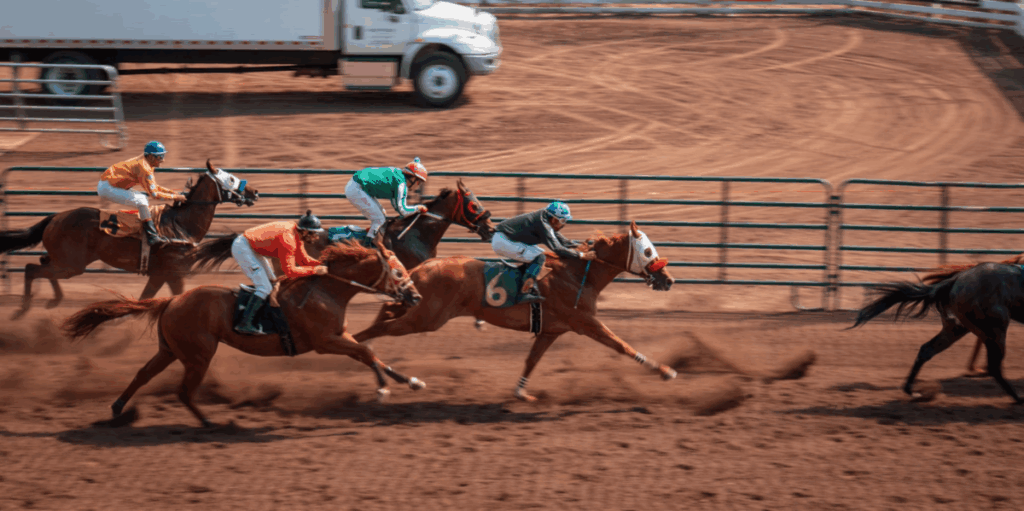Belmont Stakes 2025 Preview: Saratoga Showdown Set for June 7
 The 157th Belmont Stakes is scheduled for Saturday, June 7, 2025, and will once again be held at Saratoga Race Course. This marks the second consecutive year the race moves away from Belmont Park due to ongoing renovations. Despite the location shift, the energy surrounding the third leg of the Triple Crown remains electric. The race will be contested over 1¼ miles and offers a $2 million purse, attracting a strong group of three-year-olds preparing to make their mark on racing history.
The 157th Belmont Stakes is scheduled for Saturday, June 7, 2025, and will once again be held at Saratoga Race Course. This marks the second consecutive year the race moves away from Belmont Park due to ongoing renovations. Despite the location shift, the energy surrounding the third leg of the Triple Crown remains electric. The race will be contested over 1¼ miles and offers a $2 million purse, attracting a strong group of three-year-olds preparing to make their mark on racing history.
Even without a Triple Crown bid on the line, the Belmont retains its status as a proving ground for both horses and their connections. That mystique is alive and well at Saratoga, even given the shortened distance.
In 2025, fans and handicappers are looking closely at training patterns, race-day conditions, and early odds to identify potential standouts.
The Return to Saratoga
The decision to host the Belmont Stakes at Saratoga continues to reshape expectations. The historic venue offers both logistical challenges and tactical nuances that separate it from Belmont Park.
Track Layout and Race Dynamics
Saratoga’s configuration results in a shorter run-up to the first turn, which changes how jockeys handle the break. Unlike the sweeping expanses of Belmont Park, Saratoga is more compact and often rewards tactical speed and positioning. The 1¼-mile distance, shorter than the traditional Belmont trip, means early fractions matter more than ever. While the venue remains a fan favorite, horses that have raced or worked over Saratoga’s surface gain an edge in familiarity and footing.
Crowd and Racing Festival Atmosphere
The Belmont Stakes Racing Festival, scheduled from June 4–8, includes 27 stakes races and features over $11 million in total purses. The multi-day event at Saratoga creates a holiday atmosphere for fans and bettors alike. Opening days will feature New York Showcase races, while Belmont Day itself brings together top-class racing talent from across the country. This celebratory backdrop adds momentum to the main event and places greater focus on undercard performance as a guide for late betting decisions.
Early Contenders in the Spotlight
While the final field won’t be drawn until the week of the race, several horses are already attracting attention. Trainers are closely managing fitness, rest, and travel in preparation for a demanding run.
Sovereignty and the Derby Trail
Sovereignty, the Kentucky Derby winner, bypassed the Preakness Stakes and has been training steadily at Saratoga. His resume includes a pair of graded wins and a solid pedigree suited for distance. His five-furlong workout in early May drew praise for its fluid motion and professional finish. Fans are keen to see how he responds after a five-week layoff, but his proven form over longer routes and familiarity with the Saratoga surface make him a leading contender.
Journalism and the Preakness Bounce
Journalism, who captured the Preakness Stakes, brings momentum into June. His deep closing style, paired with a patient ride at Pimlico, helped him storm home from mid-pack. If the Belmont pace turns lively early, Journalism could benefit once again. However, much depends on his gate draw and how quickly he settles into rhythm over the Saratoga layout. Observers will be watching his gallop patterns and schooling sessions for clues on how he’s handling the shorter turnaround.
Other Names to Watch
Hill Road, winner of the Peter Pan Stakes, enters the conversation as a late-developing threat. His connections believe he’s improving at the right time. Baeza, third in the Derby, may return for another Triple Crown start depending on post-draw position. Rodriguez, a talented colt who missed the Derby due to a minor foot issue, has resumed full training. His status remains fluid but promising.
Bettors Monitoring Pre-Race Momentum
In the weeks leading up to the Belmont, bettors are actively evaluating news updates, workout reports, and shifting market sentiment. Lineup speculation is only part of the equation—betting behavior reveals much more.
The Value of Watching Workout Reports
Several of the top contenders are expected to post final workouts at Saratoga during the last week of May and first week of June. These breezes are often the clearest indicators of readiness, particularly for horses skipping the Preakness. Trainers will look for signs of fluidity, consistency in stride, and strong gallop-outs. Public workout footage and trainer comments will influence how money flows as the race nears.
Identifying Market Movement Before the Draw
Even before the field is official, betting markets begin to reflect whispers from backstretch sources, clocker reports, and stable confidence. Some horses attract early money due to strong gallops or previous Saratoga success. As fans evaluate potential entries, many are already looking to bet on the 2025 Belmont Stakes based on these early signals rather than waiting for the draw.
Storylines That Could Shape the Day
Each Belmont brings subplots—rising stars, redemption arcs, and breakout moments for trainers and jockeys. This year’s race is no exception.
Return of the Classic Distance Influence
While the race is shorter than its usual 1½-mile trip, stamina remains a key factor. Horses bred for longer distances and conditioned for sustained drive tend to outperform their peers over 1¼ miles. Pedigree analysts are paying attention to bloodlines known for late maturity and endurance. Stakes performance at 9 furlongs or beyond still ranks as a primary metric for assessing staying power.
Trainer Confidence and Tactical Planning
Trainers who have navigated the Triple Crown circuit before know how to prepare a horse for a late-season peak. Expect interviews and pre-race quotes to shed light on how they plan to approach the early fractions and settle into the backstretch. Watch for decisions around blinkers, jockey changes, and even equipment tweaks as signs of stable strategy shifts. These changes often lead to betting momentum if paired with strong morning drills.
Saratoga’s Role in Race-Day Conditions
Weather in early June can be unpredictable. A wet track or high humidity may favor certain runners. Bettors and trainers alike will monitor forecasts to fine-tune strategy. Past form on an off track—especially at Saratoga—becomes more valuable in such cases. Surface adaptability will also influence late odds movement and potentially impact pace dynamics.
The Promise of Excitement and Unpredictability
With elite contenders, strategic depth, and Saratoga’s distinct layout, the 157th Belmont Stakes promises both excitement and unpredictability. Even without a Triple Crown on the line, this year’s race is rich in talent and storylines. As workouts wrap and odds shift, the final leg of the series remains a must-watch—where legacies are forged, and smart bets find their edge.
 Horse racing tournaments are thrilling events that combine the excitement of sport with the elegance of equestrian tradition. Whether you’re a seasoned enthusiast or a newcomer to the world of horse racing, proper preparation is key to fully enjoying and potentially profiting from these events. This guide will walk you through the essential steps to get ready for upcoming horse racing tournaments.
Horse racing tournaments are thrilling events that combine the excitement of sport with the elegance of equestrian tradition. Whether you’re a seasoned enthusiast or a newcomer to the world of horse racing, proper preparation is key to fully enjoying and potentially profiting from these events. This guide will walk you through the essential steps to get ready for upcoming horse racing tournaments. Thoroughbred horse champions aren’t just born overnight. However, their genetics do play an important role in their thoroughbred status. They must also undergo the right physical conditioning, develop strong mental stamina, and build tight-knit relationships with trainers and jockeys.
Thoroughbred horse champions aren’t just born overnight. However, their genetics do play an important role in their thoroughbred status. They must also undergo the right physical conditioning, develop strong mental stamina, and build tight-knit relationships with trainers and jockeys.